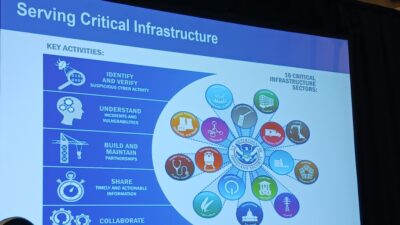Warehouse automation has grown thanks to a seemingly permanent spike in e-commerce and an ongoing labor shortage that has led to ballooning labor costs.

Warehouse automation has had a good pandemic. That’s because it’s being driven by two covid-related trends: a seemingly permanent spike in e-commerce, and an ongoing labor shortage that has led to ballooning labor costs.
To take the second point first, the labor problems during the height of the pandemic were very much a short-term thing caused by widespread staff absences due to self-isolation, as well as the need to implement safe social distancing practices in warehouses.
Yet the consensus is that the labor shortage is here to stay. In the specific case of warehouse work, a structural shift away from manual labor is a large part of the problem – as is the general issue of aging workforces in most major economies. This shift away from warehouse work has resulted in strong wage inflation in the sector, driven primarily by Amazon which has increased hourly rates to well above previous market norms, forcing most e-commerce companies to follow suit. And for e-commerce operations, the difficulties are further exacerbated by sky-rocketing demand as customers who switched to (or increased their use of) e-commerce out of necessity during the pandemic are mostly not switching back to more traditional forms of shopping.
Luckily for the e-commerce industry, warehouse automation is well suited to handle the high levels of flexibility required for e-commerce operations. Yes warehouse automation allows e-commerce companies to redeploy scarce labor into higher value tasks in the short term. But, equally important, it offers much improved efficiency over the older more manual ways of doing things. The vast majority of warehouse operations that adopted automation as a short-term means of coping with the pandemic have seen the benefits. They will not be going back to the old ways.
A regional view is crucial
However, the picture is more complicated if we look at things regionally. That’s because warehouse automation has not proceeded at a uniform pace in all countries. If we look at the market according to average automation spend per warehouse, i.e. total warehouse automation spend divided by total number of warehouses, it is led (in descending order) by the UK, Australia, Denmark, the USA, and Germany. In the graph below it is clear that, usually, those countries that report a higher e-commerce spend and a higher average labor spend have much higher average automation spend per warehouse. The correlation between labor costs and automation spend is clearly particularly strong.

Why does the UK lead?
The most notable result from our research is that the UK is highly ranked. That’s because the country has a relatively high penetration of e-commerce, coupled with relatively high labor costs (on a per warehouse basis, the UK spends much more than the global average). This makes it a prime market for warehouse automation. UK consumers have been buying things online for a long time and expect extremely fast (and free) delivery – something that requires levels of efficiency that can only be achieved with automation.
Quite why the UK has been faster to adopt e-commerce than other comparable European nations is another question entirely. But the figures are stark: in France, the e-commerce spend per warehouse was $20.2m last year, in Italy it was $8.8m, while the UK has the world’s highest at $36m. The same is likely also true for the USA, where average automation spend per warehouse is also extremely high. The USA had an exceptional number of large warehouse automation projects announced in 2020, including from Walmart, Kroger, and, of course, Amazon. Part of the answer also undoubtedly lies in the fact that warehouse labor in the UK and these other countries is particularly expensive.
Denmark driven by labor
Meanwhile, in Denmark it seems very clear that the high automation spend is driven less by high levels of e-commerce spend per warehouse (which is only $15.3m) and more by their very high spend on warehouse labor costs which average at $27.2 per square foot of warehouse – the highest in the world by quite some margin (the next being the UK at $21.3). One notably large warehouse automation project in Denmark was commissioned by Reitan Distribution in 2020. It’s a 30,000 square foot warehouse extension with high pallet bay storage that will pick, pack and distribute 130,000 cases per day.

The Spanish exception that proves the rule
The outlier on these measures is Spain which has relatively low e-commerce spend per warehouse at €13.25m and very low average labor spend per square foot at €9.37. So, what’s going on in Spain? It all comes down to a massive investment by one company: Mercadona. Mercadona has been one of Spain’s largest investors in warehouse automation in the grocery segment. In fact, its investments in warehouse automation account for about 1/3 of the entire Spanish market. But this investment spike happened between 2018 and 2020 and therefore represents a short-term blip. In this regard, Mercadona is “the exception that proves the rule:” remove it from the equation and Spain’s position in the warehouse automation league tables would fall much lower – in line with its lower average e-commerce and labor spend figures.
The automation laggards
The laggards are unsurprising. India’s low warehouse automation spend per warehouse is matched by low e-commerce spend and very low labor costs. China also has low automation spend per warehouse, at $143,000 per warehouse (despite this it is still the second largest market for warehouse automation globally). This is in spite of high e-commerce spend per warehouse of $29.4m. But this can be explained by their labor costs which are still low by global standards and have led to labor spend of only $3.98 per square foot. Poland and Mexico are also poor performers in terms of warehouse automation spend, again reflected by low labor costs and by relatively low levels of e-commerce spending per warehouse.
UK to be Europe’s largest warehouse automation market by 2025
Finally, when it comes to the overall size of the warehouse automation market, Germany and the UK led Europe in 2020, while the USA was the world’s largest market at $8.1 billion. From a CAGR perspective, looking out from 2020-2025, the UK is again in the lead at 24%, and it will by 2025 be Europe’s largest warehouse automation market at $3.9 billion – by which point its market will be $900 million larger than Germany’s.
– This originally appeared on Interact Analysis’ website. Interact Analysis is a CFE Media and Technology content partner.



